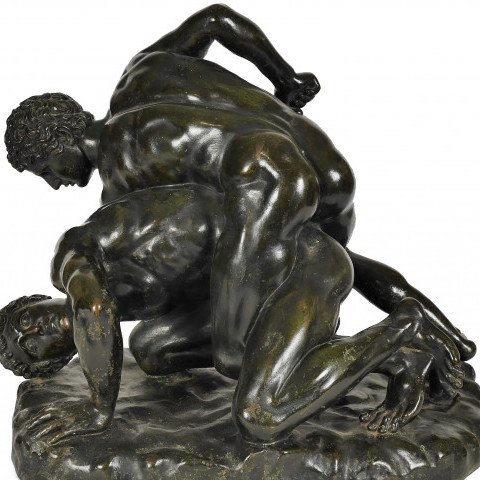Lysippos was a Greek sculptor of the third th century BC. Together with Scopas and Praxiteles, he is considered one of the three greatest sculptors of the Classical Greek era, bringing transition into the Hellenistic period. Problems confront the study of Lysippos because of the difficulty of identifying his style among the copies which survive. Not only did he have a large workshop and many disciples in his immediate circle, but there is understood to have been a market for replicas of his work, supplied from outside his circle, both in his lifetime and later in the Hellenistic and Roman periods. The Victorious Youth or Getty bronze, which resurfaced around 1972, has been associated with him.
Born at Sicyon around 390 BC, Lysippos was a worker in bronze in his youth. He taught himself the art of sculpture, later becoming head of the school of Argos and Sicyon. According to Pliny, he produced more than 1,500 works, all of them in bronze. Commentators noted his grace and elegance, and the symmetria, or coherent balance, of his figures, which were leaner than the ideal represented by Polykleitos and with proportionately smaller heads, giving them the impression of greater height. He was famous for his attention to the details of eyelids and toenails.

